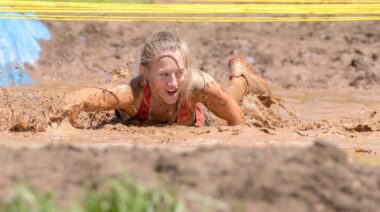Recreational running is one of the most popular activities people undertake without a coach, if not the most popular, which means it is often done with bad form. In a recent study in the Journal of Strength and Conditioning Research, a new method of teaching running form was assessed to see if it can address this issue.
The running method is called midstance to midstance running (MMR). MMR is similar to Pose or Chi running in that it emphasizes changes that shorten stride length and create a healthier foot strike. It is believed that this method will be healthier and also improve performance.
In the study there were two groups of experienced runners who each underwent the eight-week program. Both groups were tested for a host of important running factors, including their mechanics, both before and after the eight weeks. One of the two groups had MMR training, and the other simply continued to run.
The running instruction did make some changes for the runners. First, their stride length was shortened. Many recreational runners consider a long stride length a good thing, but it may not be. A long stride length can lead to the foot landing too far in front of the runner, which can be stressful on the joints and make a heel strike unavoidable.
Since the runners were running at a fixed pace, a shorter stride invariably led to a faster turnover rate. There knee flexion velocity was also reduced. Oddly enough, however, this change in gait didn’t alter any other values. There were no changes to heart rate, rate of perceived exertion, or running economy. These are some of the most important factors in running performance, and the major change to form didn’t affect them at all. Even with the shorter stride, foot contact position wasn’t changed either.
Sometimes a major change to running mechanics takes time to pay off, which could possibly be happening here. Running requires high repetition in order to get engrained deep into our nervous system. Changes to form or ability are not always expressed in actual running performance.
If that’s true, it’s possible that this program might be more effective if it included an additional component or more repetition. It’s also possible that MMR is simply not effective at improving performance. However, with a three-inch reduction in stride length, you’d expect something would have to change.
In fact, despite the conclusion that there was no statistically significant change in foot contact position, two out of nine of the MMR participants did change from a heel strike to a mid-foot strike. If the MMR method placed more emphasis on foot contact position, perhaps this would have proven a bigger difference. Also, while the runners were required to wear the same footwear from test to test, the type of shoe was probably chosen by the athlete, which can make a major difference in foot strike.
So, while performance wasn’t affected, safety was improved for some of the participants. Since improper mechanics are practically the norm for running, it seems that spending time working on it will eventually lead to success.
References:
1. Daniel Craighead, et. al., “A novel running mechanic’s class changes kinematics but not running economy,” Journal of Strength and Conditioning Research DOI: 10.1519/JSC.0000000000000500
Photo courtesy of Shutterstock.






